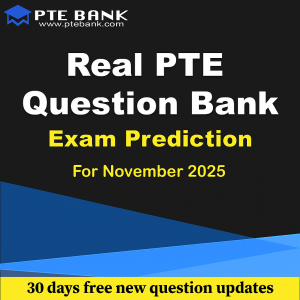Here are Top 3 frequently asked Summarize Written Text questions in recent PTE Academic test (November 2020).
1.Social Networks [NEW]
Ten years ago, Barsky and Purdon (2006) discovered that social networks which are expanding communication through social media are becoming popular and the costs involved are getting further reduced. Yet, library executives did not see how such a phenomenon could become a part of library and information services. They felt that the users should be left to their social media while the library carried on with its traditional roles (De Rosa et al., 2007). This was also the case when Charnigo and Barnett-Ellis (2007) conducted a survey of 126 academic librarians and concluded that 54% of the librarians surveyed did not believe that there was an academic purpose for Facebook. The rationale behind these librarians’ belief was that the social media was a space where students interact with each other, hence, the librarian was not welcome as their coming in might be viewed as an invasion of space. But time has proved that as the technology of the social media became more popular, users and librarians acquired digitally literacy, and libraries, seeing an explosion of social media around it, were forced to reconsider their stance. In a survey involving 497 international librarians, Taylor & Francis (2014) discovered that over 70% of librarians now feel that the use of social media is important. Though the wave began with public libraries (Mon, 2015), today, libraries of every type either have a social media presence or they are seriously considering it. Hence, the use of social media by libraries has become mainstream.
2.Books and Television
To understand the final reason why the news marketplace of ideas dominated by television is so different form the one that emerged in the world dominated by the printing press, it is important to distinguish the quality of vividness experienced by television viewers from the “vividness” experienced by readers. I believe that the vividness experienced in the reading of words is automatically modulated by the constant activation of the reasoning centres of the brain that are used in the process of cocreating the representation of reality the author has intended. By contrast, the visceral vividness portrayed on television has the capacity to trigger instinctual responses similar to those triggered by reality itself – and without being modulated by logic, reason, and reflective thought.
The simulation of reality accomplished in the television medium is so astonishingly vivid and compelling compared with the representations of reality conveyed by printed words that it signifies much more than an incremental change in the way people consume information. Books also convey compelling and vivid representation of reality, of course. But the reader actively participates in the conjuring of the reality the book’s author is attempting to depict. Moreover, the parts of the human brain that are central to the reasoning process are continually activated by the very act of reading printed words: Words are composed of abstract symbols – letters – that have no intrinsic meaning themselves until they are strung together into recognizable sequences.
Television, by contrast, present to its viewers a much more fully formed representation of reality – without requiring the creative collaboration that words have always demanded.
3.Rosetta Stone
When the Rosetta Stone was discovered in 1799, the carved characters that covered its surface were quickly copied. Printer’s ink was applied to the Stone and white paper laid over it. When the paper was removed, it revealed an exact copy of the text—but in reverse. Since then, many copies or “facsimiles” have been made using a variety of materials. Inevitably, the surface of the Stone accumulated many layers of material left over from these activities, despite attempts to remove any residue. Once on display, the grease from many thousands of human hands eager to touch the Stone added to the problem.
An opportunity for investigation and cleaning the Rosetta Stone arose when this famous object was made the centrepiece of the Cracking Codes exhibition at The British Museum in 1999. When work commenced to remove all but the original, ancient material the stone was black with white lettering. As treatment progressed, the different substances uncovered were analysed. Grease from human handling, a coating of carnauba wax from the early 1800s and printer’s ink from 1799 were cleaned away using cotton wool swabs and liniment of soap, white spirit, acetone and purified water. Finally, white paint in the text, applied in 1981, which had been left in place until now as a protective coating, was removed with cotton swabs and purified water. A small square at the bottom left corner of the face of the Stone was left untouched to show the darkened wax and the white infill.
More Real PTE Questions for November 2020?
Get start with signing up with PTE BANK!
Step 1: Register an account
Step 2: Choose your perfect PTE Exam Package
Step 3: Go to “My Account”, click on “download” to get PTE preparation materials




